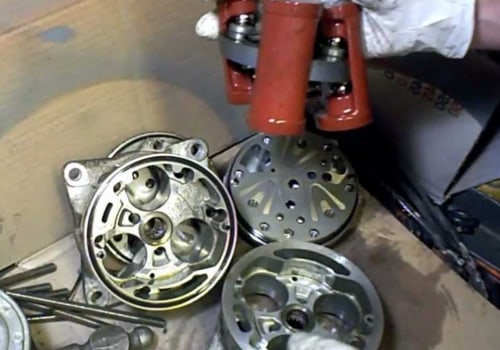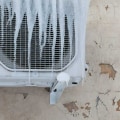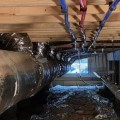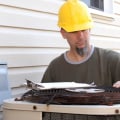Key Takeaways
- Anticipate the process and gain insight on air conditioning setup.
- Get ready for the installation day with essential preparations.
- Understand the steps involved while the air conditioning system is installed.
- Review important factors after the installation is completed.
What To Expect During An Air Conditioning Installation | Overview of Air Conditioning Installation
Understanding what to expect during an air conditioning installation can significantly enhance your experience and prepare you for the process. An air conditioning system installation involves several key steps carried out by skilled air conditioning technicians. These professionals will help you select the right air conditioning unit, ensuring it fits your space and meets your cooling needs. During the installation, the technicians will connect the air conditioning equipment to existing electrical and ductwork, which is crucial for optimal performance. Once complete, the air conditioner will be ready to deliver conditioned air, improving your indoor air quality and comfort. Knowing what to expect during an air conditioning installation helps you anticipate the flow of work, leading to a smooth and efficient experience.
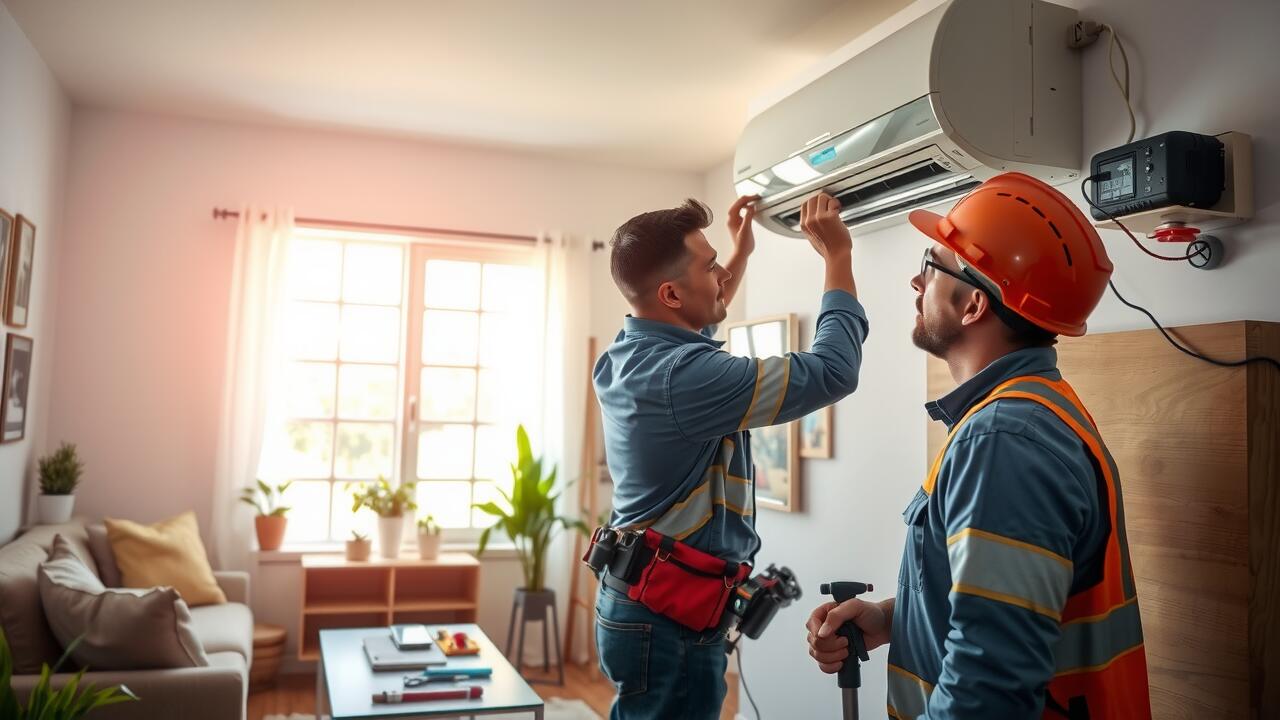
What to Expect During an Air Conditioning Installation | Key Steps in the Installation Process
Understanding what to expect during an air conditioning installation involves several key steps that ensure optimal performance. The process typically begins with the assessment of your home's layout. This includes evaluating the size and insulation of your space to determine the appropriate cooling capacity needed for effective temperature control. Proper placement of the HVAC system is essential for enhancing airflow through air ducts, which directly impacts the efficiency of air filters and air purifiers in maintaining indoor air quality.
The installation phase proceeds with the delivery and positioning of the central air unit or heat pump. This step often requires connecting the system to existing electrical and ductwork. Technicians will ensure that the air ducts are sealed properly to avoid air leaks, which can significantly affect heating and cooling efficiency. Careful attention is also given to the integration of additional components like a heater, if needed, to provide consistent heating during colder months. Understanding these key steps can help homeowners feel more prepared and informed throughout the installation process.
Importance of Professional Installation
Professional installation is crucial for ensuring that your air conditioning system functions optimally. Technicians are trained to handle complex wiring and electrical systems, including the proper setup of the compressor, heat exchanger, and both the condenser and evaporator coils. This expertise not only guarantees optimal performance but also ensures that the appliance can effectively manage both heat and humidity in your indoor environment. Understanding what to expect during an air conditioning installation helps homeowners appreciate the value of skilled professionals who can navigate these complexities.
A poorly installed air conditioning system can lead to various issues, including inefficient energy use and premature equipment failure. Incorrect placement of the unit can affect airflow and cooling efficiency. Professionals are skilled in assessing factors like ceiling height and existing electric conduits to ensure the unit is positioned for peak performance. Regular routine maintenance from these experts helps mitigate problems and extends the lifespan of the system, keeping indoor temperatures comfortable throughout the year.
Preparing for the Installation Day
Preparing for an air conditioner installation involves several essential steps to ensure a smooth process. Assessing your space is crucial to determine the appropriate location for the new air conditioning unit, keeping in mind the efficiency of conditioned air delivery throughout your home. Understanding your air conditioning needs allows you to select the right refrigeration system that suits your preferences, particularly if you're transitioning from an old air conditioning unit. Knowing what to expect during an air conditioning installation helps set realistic expectations for the day. Engaging professional air conditioner installers can provide helpful insights into the HVAC installation process, ensuring that the new air conditioning system integrates seamlessly with your existing HVAC system. Proper preparation on your part can lead to a successful installation, making your home comfortable and breezy.
Assessing Your Space for the Installation
Assessing your space for a new air conditioning system is crucial to ensure optimal performance. Professional HVAC installation contractors will evaluate factors like room size, insulation, and positioning of windows and doors. This assessment helps in identifying the ideal HVAC system tailored specifically for your home. Understanding how the supply air temperature interacts with your residential layout can significantly influence the effectiveness of your new air conditioner.
A complete HVAC installation involves meticulous planning and consideration of your environment. Each step of the HVAC installation guide emphasizes the importance of selecting a suitable location for the air systems. An experienced HVAC installation technician will measure spaces to determine the best placement for the entire air conditioner, ensuring that all HVAC installation steps are executed correctly. This attention to detail not only enhances comfort but also promotes the longevity of your new HVAC installation.
Choosing the Right Air Conditioning System
Selecting the right HVAC system is crucial for achieving optimal comfort and efficiency in your space. Understanding what to expect during an air conditioning installation can simplify this process. New air conditioners come in various types, including central air systems and modern air conditioners designed for specific needs. Discussing requirements with trusted HVAC installation technicians will help you determine the appropriate HVAC system for your property, ensuring you maximize energy efficiency while enjoying cooled air throughout your home or business.
The HVAC installation checklist is an essential tool in this decision-making process. It outlines necessary considerations, such as system size, energy efficiency ratings, and compatibility with existing HVAC equipment. An air conditioner condenser plays a vital role in how effectively your new HVAC system operates. Choosing the right HVAC system can lead to a perfect HVAC system that caters to your heating and cooling needs while minimizing the need for future HVAC system replacements or extensive repairs.
| HVAC System Type | Cooling Capacity (BTU) | Energy Efficiency Rating (SEER) | Ideal Application |
|---|---|---|---|
| Central Air Conditioning | 24,000 - 60,000 | 14 - 25 | Whole-home cooling |
| Window Air Conditioner | 5,000 - 15,000 | 10 - 15 | Single rooms or small apartments |
| Mini-Split System | 9,000 - 36,000 | 16 - 30 | Zone cooling for specific areas |
| Portable Air Conditioner | 8,000 - 14,000 | 8 - 14 | Temporary or supplemental cooling |
What Happens During an Air Conditioning Installation
During an air conditioning installation, homeowners can expect a comprehensive process that ensures optimal performance of their new HVAC unit. A good HVAC contractor will arrive prepared, having assessed the space to deliver and place the new HVAC unit efficiently. This includes connecting the system to existing electrical and ductwork while addressing potential air leaks that could lead to inadequate airflow. Professional HVAC service is crucial, especially in Carrollton HVAC installation projects, where a superior HVAC system can significantly enhance indoor comfort. Understanding what to expect during an air conditioning installation helps homeowners appreciate the expert workmanship provided by skilled HVAC contractors. This not only involves the installation itself but also guarantees that the new HVAC unit operates effectively, paving the way for a well-functioning home HVAC system.
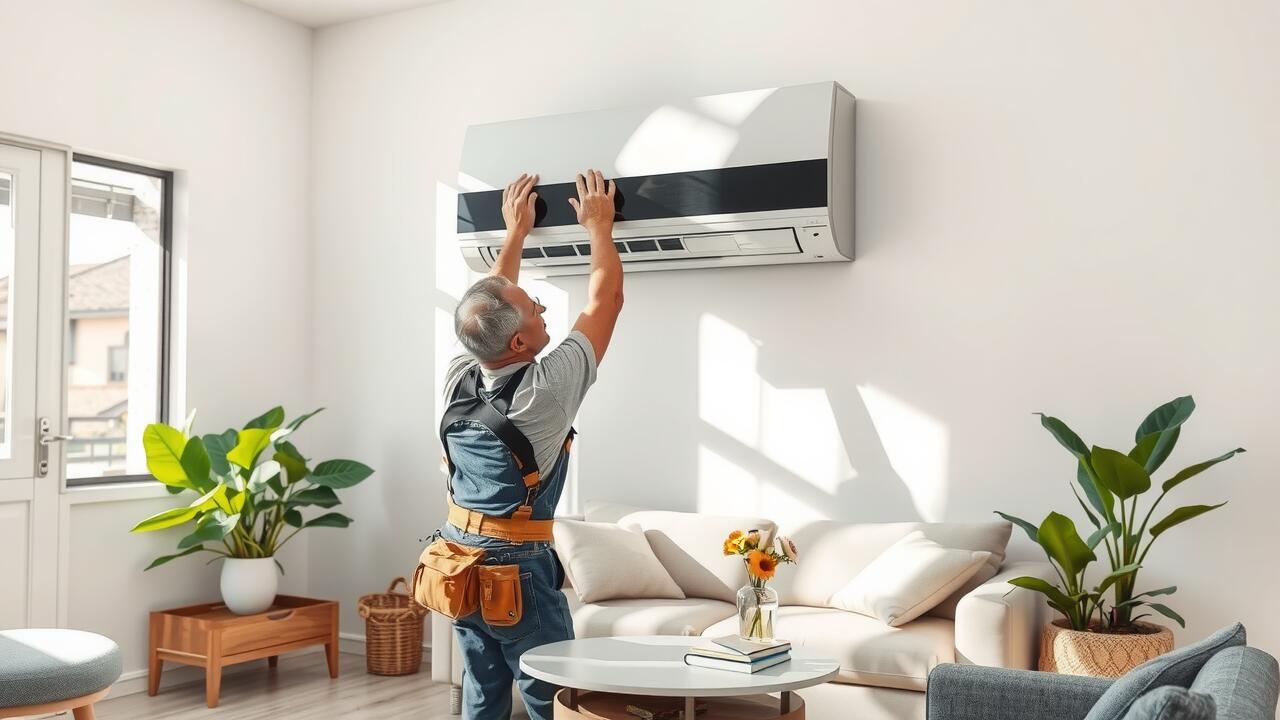
Delivery and Placement of the Air Conditioning Unit
During an air conditioning installation, the delivery and placement of the unit is a crucial step in ensuring a seamless HVAC installation. Proper placement of the outdoor and indoor components is essential for achieving efficient airflow and optimal return air temperature. A good HVAC company understands the importance of assessing the specific cooling needs of the space, which is why they take great care in positioning the indoor evaporator coil and ensuring there are no potential air duct leaks that could compromise the system’s efficiency.
Once the equipment arrives, HVAC contractors will strategically place the unit according to their research on the best practices laid out by HVAC manufacturers. The goal is to ensure that the cooling system operates effectively, meets the homeowner's cooling needs, and ultimately provides efficient air throughout the home. What to expect during an air conditioning installation includes a careful analysis of the layout and airflow patterns to guarantee that the next air delivered by the system aligns perfectly with the overall installation goals.
Connecting the Air Conditioning System to Electrical and Ductwork
During the installation process, connecting the new air conditioning system involves integrating the indoor evaporator with the existing electrical and ductwork. What to expect during an air conditioning installation includes ensuring proper connections to support a reliable cooling system. Professional HVAC technicians, along with reputable HVAC contractors, execute this task with precision. They assess the pre-installation evaluation results to guarantee that the electrical supply meets the system's requirements. This step is crucial for ensuring adequate heating during the colder months and maximizing the system's efficiency.
HVAC specialists focus on securing connections while prioritizing safety and functionality. The integration of the system is performed meticulously to prevent future issues, ensuring seamless operation. During these HVAC consultations, homeowners gain insights into the specifics of their installation. Highland Park HVAC professionals emphasize the importance of quality workmanship in every connection made. With professional HVAC specialists on the job, homeowners can rest assured that their residential air needs will be met adequately and any HVAC promotions can be utilized for additional benefits.
Post-Installation Considerations
After completing your air conditioning installation, it’s essential to understand what to expect during the post-installation phase. Testing the new air conditioning system is crucial to ensure it operates efficiently and meets your needs for optimal cooling. The pre-installation assessment should have considered the appropriate cooling capacity for your space, taking into account insulation levels and the cooling process. Proper thermostat installation will enhance the performance of your system, whether it's a heat pump system or integrated with hot-air furnaces. Choosing good HVAC companies guarantees that skilled heating professionals can address any immediate questions you may have. Awareness of potential HVAC repair costs can prepare you for future maintenance needs, ensuring your system delivers cold air effectively.
- Ensure the thermostat is set correctly for optimal performance.
- Monitor the system's cooling efficiency in various weather conditions.
- Schedule a professional maintenance check after a few months of operation.
- Keep an eye on any unusual noises or smells coming from the unit.
- Change or clean air filters regularly to maintain air quality.
- Familiarize yourself with the warranty and service options provided by your HVAC company.
- Consider energy efficiency ratings to evaluate long-term savings on energy bills.
Testing the New Air Conditioning System
After the installation process is complete, testing the new air conditioning system becomes essential. What to expect during an air conditioning installation includes thorough checks by Keller HVAC technicians to ensure that the unit is functioning properly. This stage often involves measuring airflow with specialized airflow meters. Southlake HVAC professionals may assess the system's effectiveness through cooling tests. Proper insulation plays a crucial role in the efficiency of central air systems, and any signs of inadequate insulation can impact performance.
The pre-installation process should address various aspects that affect the unit's performance, ensuring all installation needs are met. Thorough testing not only guarantees effective cooling but also identifies any potential issues before they escalate. Multiple HVAC companies recommend regular checks post-installation to maintain optimal functionality and comfort. University Park HVAC experts emphasize that addressing airflow issues and ensuring proper installation contributes to the longevity of your new heating and cooling system.
Maintenance Tips for Your Air Conditioning Unit
Establishing a solid maintenance plan is crucial for the longevity and efficiency of your air conditioning unit. After understanding what to expect during an air conditioning installation, regular checks and necessary servicing can prevent issues like reduced cooling efficiency. Ensure that both the outdoor condensing unit and indoor coils are kept clean and free from debris, as this can affect the system's performance. Scheduling preseason inspections can help identify any potential problems early on.
A good installation combined with proper maintenance will create a moisture-free atmosphere in your home. Following the installation procedures and having a pre-installation inspection can make a significant difference. Neglecting these aspects, especially in the installation area, may lead to improper installation, impacting your air conditioning's effectiveness. By adhering to a regular maintenance routine, you can enjoy a successful air experience throughout the seasons.
Conclusion
Understanding what to expect during an air conditioning installation sets the stage for a successful experience. From the initial delivery to the placement of your new appliance, each step impacts the efficiency of your system and its cooling properties. Professional installation ensures that crucial components, such as the overflow safety switch, are correctly integrated into your home’s existing ductwork and electrical systems. This attention to detail during installation leads to fewer servicing issues down the line. It is also essential to share maintenance tips with your family to extend the lifespan of your unit, ensuring consistent comfort indoors.
FAQS
What are the key components involved in installing air conditioning systems?
When installing air conditioning systems, it is important to consider several key components that ensure proper cooling and airflow. This includes selecting the right air conditioning units such as central air conditioners and heat pumps, ensuring proper electrical wiring for optimal efficiency, and evaluating the condenser coil requirements. Additionally, the overall HVAC system installation can greatly vary depending on the specifics of your residential or commercial HVAC installations. Engaging with professional heating and cooling services can provide a superior HVAC installation experience while following installation requirements to transition from an old HVAC system to a more advanced HVAC field technology. Researching HVAC contractors can help identify those who specialize in heating service and are equipped to deliver an installation plan that meets your needs.
What can I anticipate during the process of residential HVAC installation when having a Lex air conditioning system installed?
During a residential HVAC installation of a Lex air conditioning system, you can expect a thorough assessment by the HVAC installer to ensure proper airflow and heating and air conditioning capabilities. The installation service may vary in complexity, but it's important to research HVAC contractors to find one who provides superior HVAC systems. Undergoing home HVAC installation will typically involve removing any existing units and ensuring the entire HVAC installation meets up-to-date standards in the HVAC industry.
How does the process of heated air conditioning system installation differ for various types of HVAC installations?
The HVAC installation varies significantly depending on the specific air-conditioning system being installed. Factors such as the size of the space, the type of unit, and any existing infrastructure all play a role in the right installation. Hiring professionals can provide helpful HVAC installation tips, ensuring that the countless air needs of your space are met efficiently.
What should I be aware of regarding the installation of a heated air conditioning system?
When installing a heated air conditioning system, it's essential to understand the different steps involved, such as assessing your space, choosing the right unit, and ensuring proper ductwork. Additionally, the installation process can vary based on the type of system you select, which impacts efficiency and heating performance.
What steps should I take to prepare my home for an air conditioning installation?
To prepare your home for an air conditioning installation, ensure that the installation area is clear of furniture and obstacles, check that all necessary permits have been obtained, and inform residents to expect noise during the installation process. It's also useful to review the chosen system's specifications and ensure adequate space for proper ventilation.




